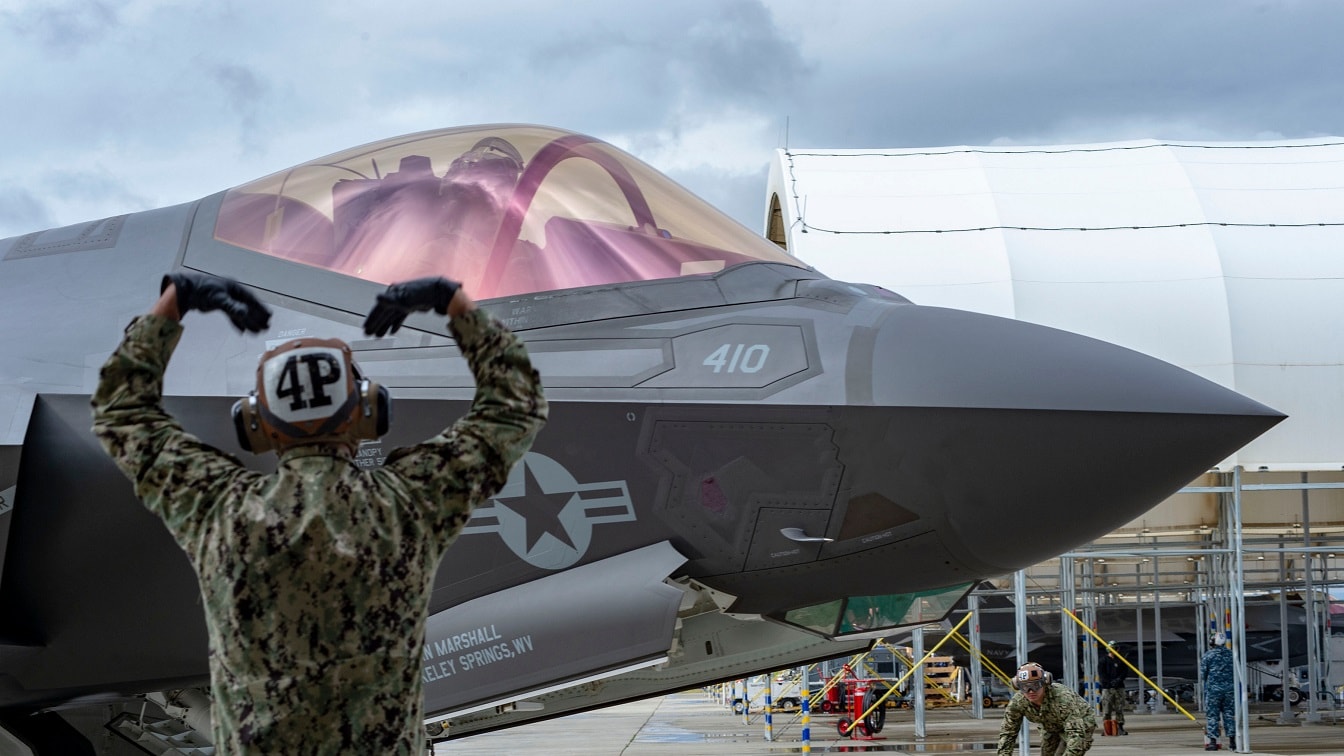The U.S. Air Force is clearly the most powerful force in the sky – clearly stronger than Russia or China. But what weapons would the Air Force depend on in a great power war? What are the most powerful weapons they have? The Air Force gets a vote in this exercise to see who has the deadliest conventional (non-nuclear) weapons in the U.S. military. The Air Force does not disappoint. First up is the “Mother of All Bombs.” Then the latest and greatest from the B-52, the B-2, the F-35, and the F-22.
The Mother of All Bombs
The Mother of All Bombs is a nickname for the GBU-43/B MOAB – or the Massive Ordnance Air Blast. This thing weighs almost 22,000 pounds and yields 11-tons of TNT. This is an airburst bomb not a penetrator, but it is intended to blast the heck out of anyone or anything or that is hiding in caves and canyons.
The Air Force first tested it in 2003 and it was first used in 2017 against an ISIS-K cave complex in Nangarhar Province in eastern Afghanistan. The Pentagon did not provide details on the strike, but President Trump called it a very successful mission. The Afghan Army later said that it killed 94 terrorists.
There are believed to be about 15 MOABs in the U.S. arsenal. It is carried by an MC-130E Combat Talon.
The B-52 Stratofortress
Can you believe that the B-52 is still flying and dropping bombs? It’s first flight was in 1952 and it was introduced in 1955. It can carry everything from nuclear to conventional bombs, cruise missiles, and hypersonic missiles. It mainly carries guided bombs such as the Joint Direct Attack Munitions (JDAMs).
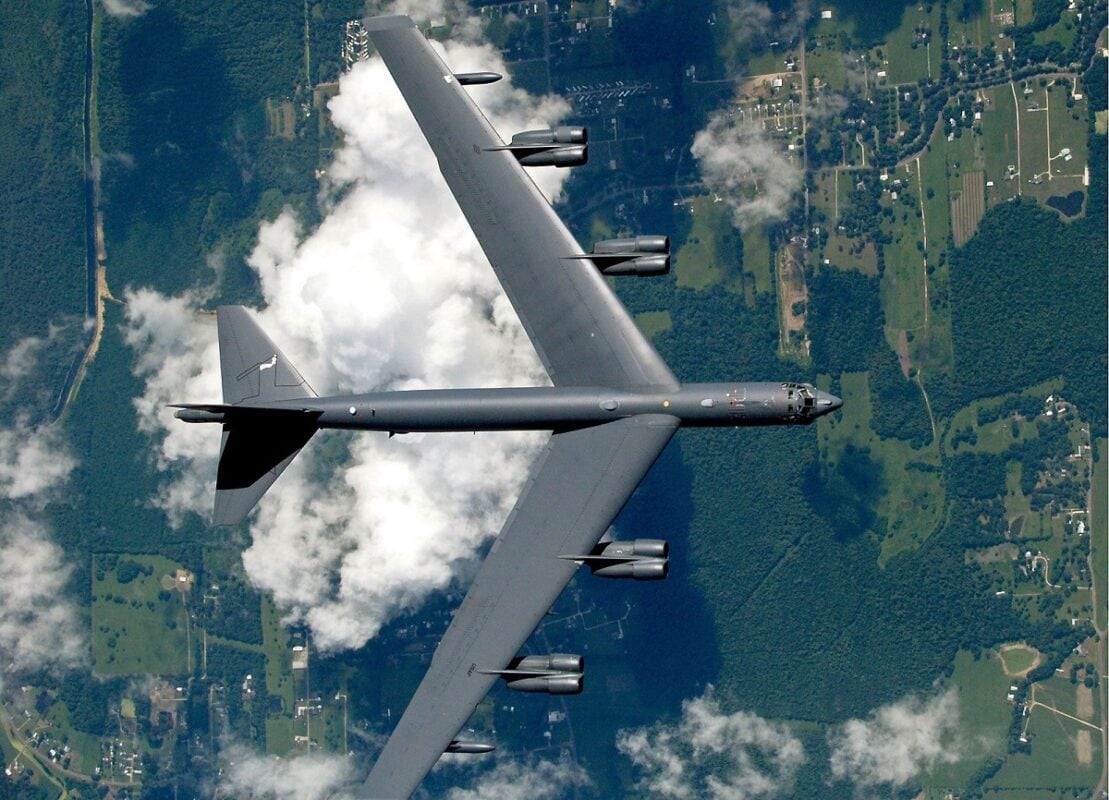
Image: Creative Commons.
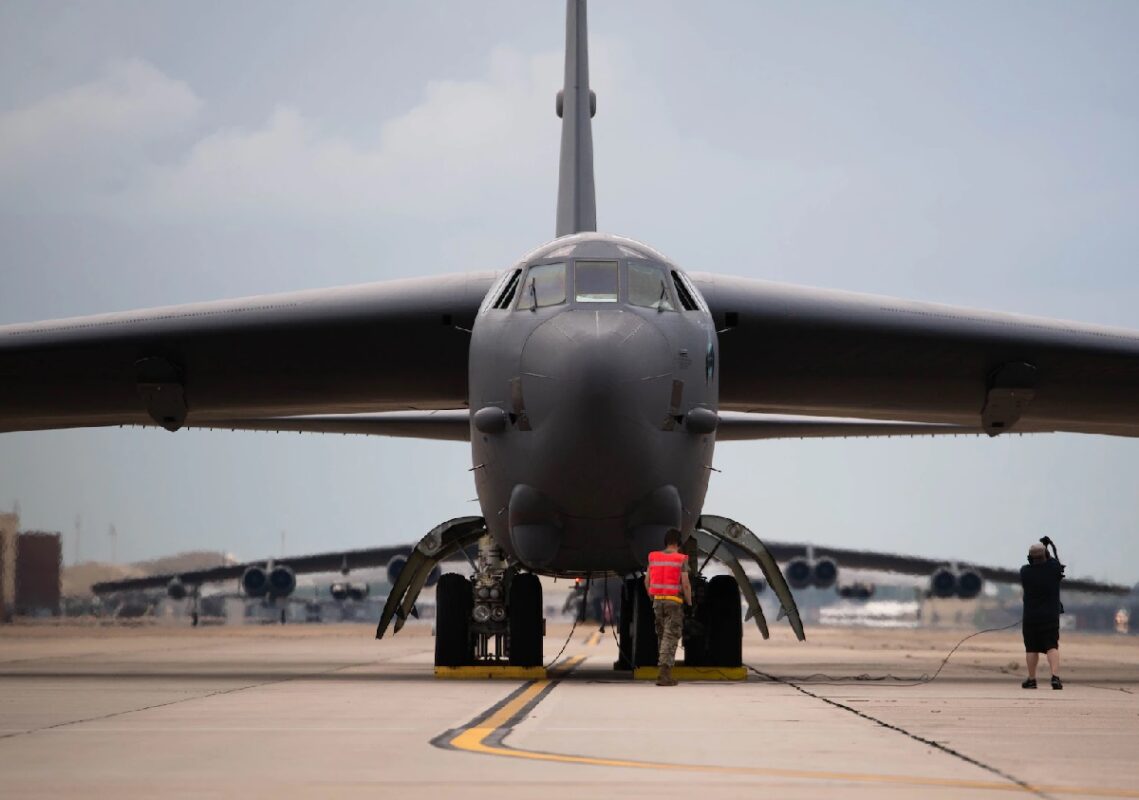
Image Credit: U.S. Air Force.
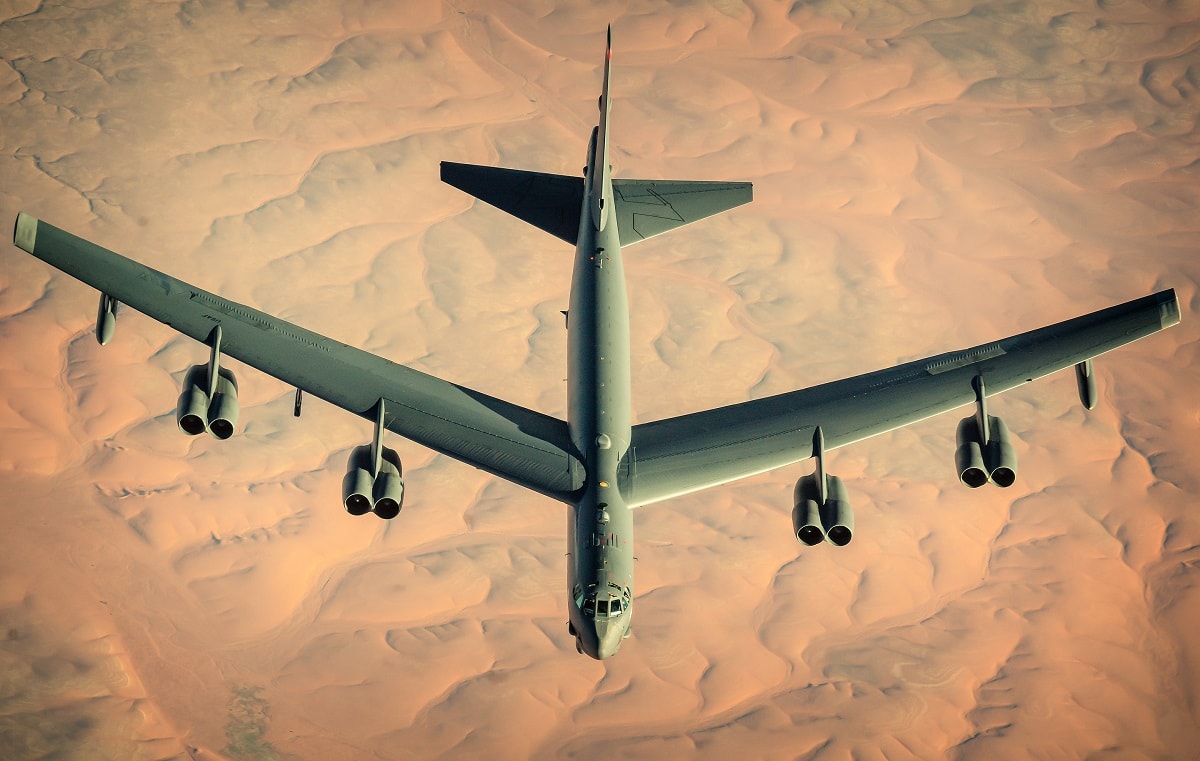
A U.S. Air Force B-52 Stratofortress assigned to the 2nd Bomb Wing departs after receiving fuel from a KC-135 Stratotanker, assigned to the 340th Expeditionary Air Refueling Squadron, during a multi-day Bomber Task Force mission over Southwest Asia, Dec. 10th, 2020. The B-52 is a long-range bomber with a range of approximately 8,800 miles, enabling rapid support of BTF missions or deployments and reinforcing global security and stability. (U.S Air Force photo by Staff Sgt. Trevor T. McBride)
The airplane has been upgraded numerous times and it is now the B-52H variant.
Nicknamed the “BUFF” (for big-ugly fat fellow), the B-52H weighs almost 500,000 pounds with fuel and ordnance. A total of 744 were built and it is the longest-serving combat aircraft in the world.
B-2 Stealth Bomber
Northrop Grumman claims it built all the components for the B-2 from scratch.
In most U.S. conflicts, the B-2 goes in first. It can fly from the United States and get re-fueled, drop its bombs on other continents, and then return home. That means it can fly 10,000 nautical miles on one re-fueling. It’s also stealthy.
The B-2 holds the record for the longest air combat mission in history. It did an early Afghanistan mission in 2001 that lasted 44 hours.
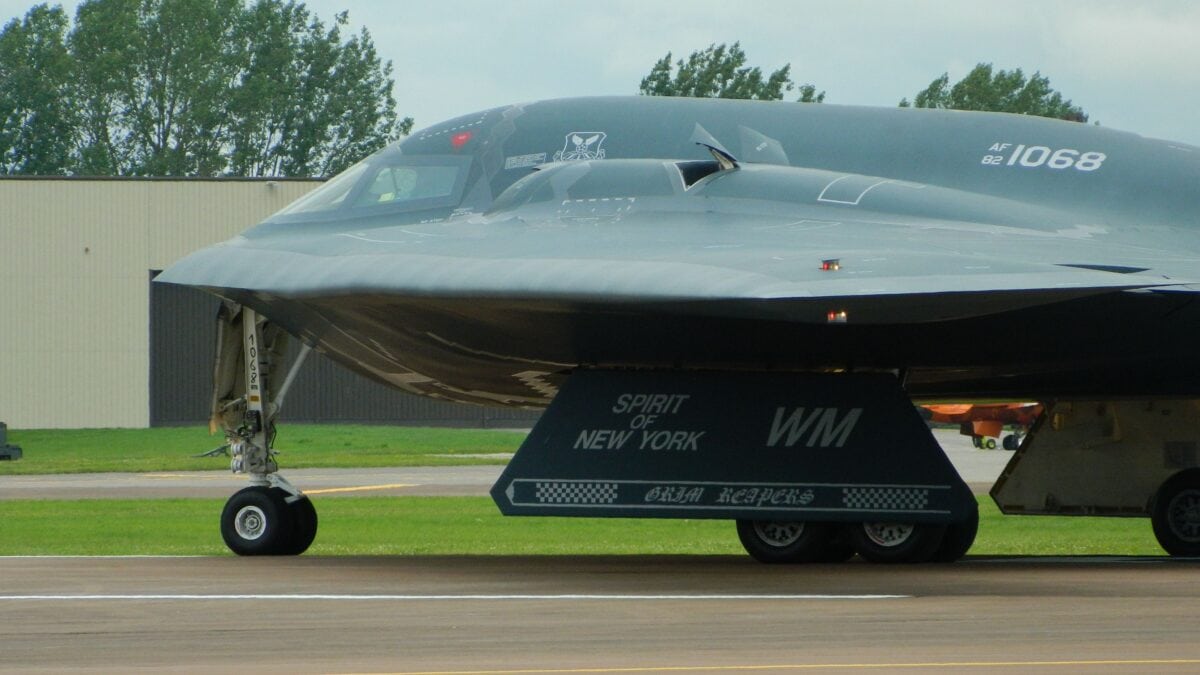

A B-2 Spirit (Spirit of Missouri) at the Dyess AFB air show 2018.
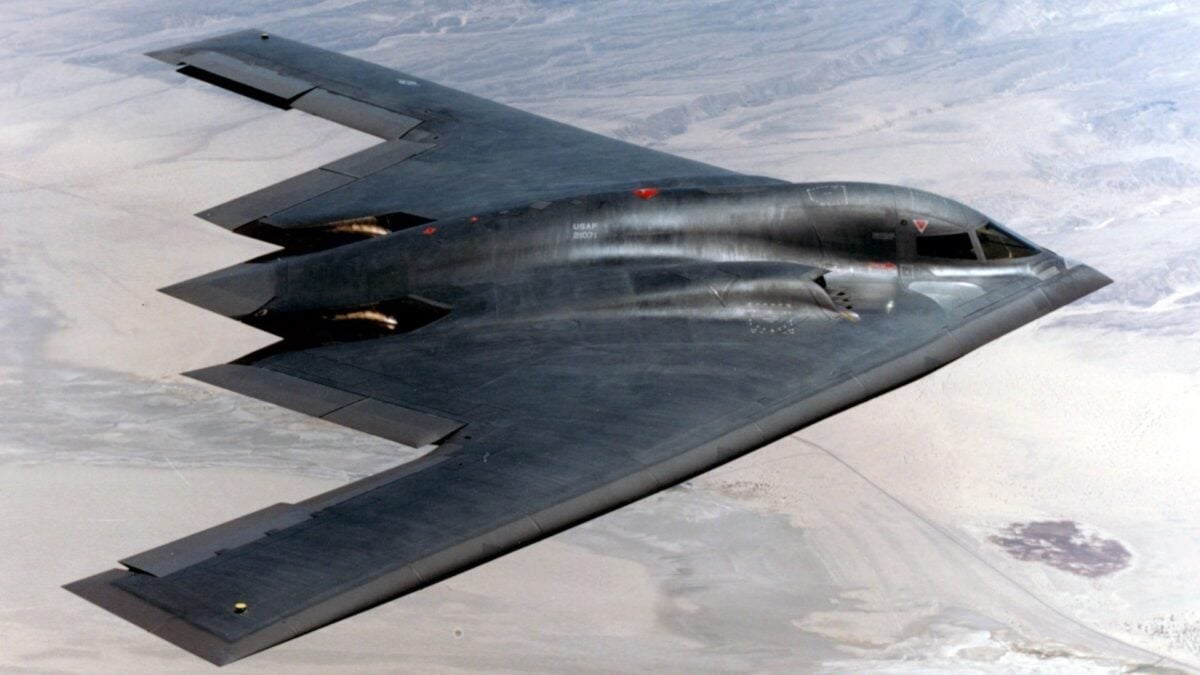
Its wingspan is half the length of a football field. It has a ceiling of more than 50,000 feet and a payload of 20 tons.
The F-35 Lightning II Joint Strike Fighter
The F-35 is a fifth-generation multi-role stealth fighter plane. It also has variations for the Marine Corps and Navy. That U.S. military plans to order over 1,700 of them.
The F-35 can carry 18,000 pounds of ordnance.
It can go MACH 1.6 with its Pratt & Whitney F135 engine.
It has advanced electronic warfare capabilities to jam enemy radar and disrupt enemy fighter attacks or missile defenses.
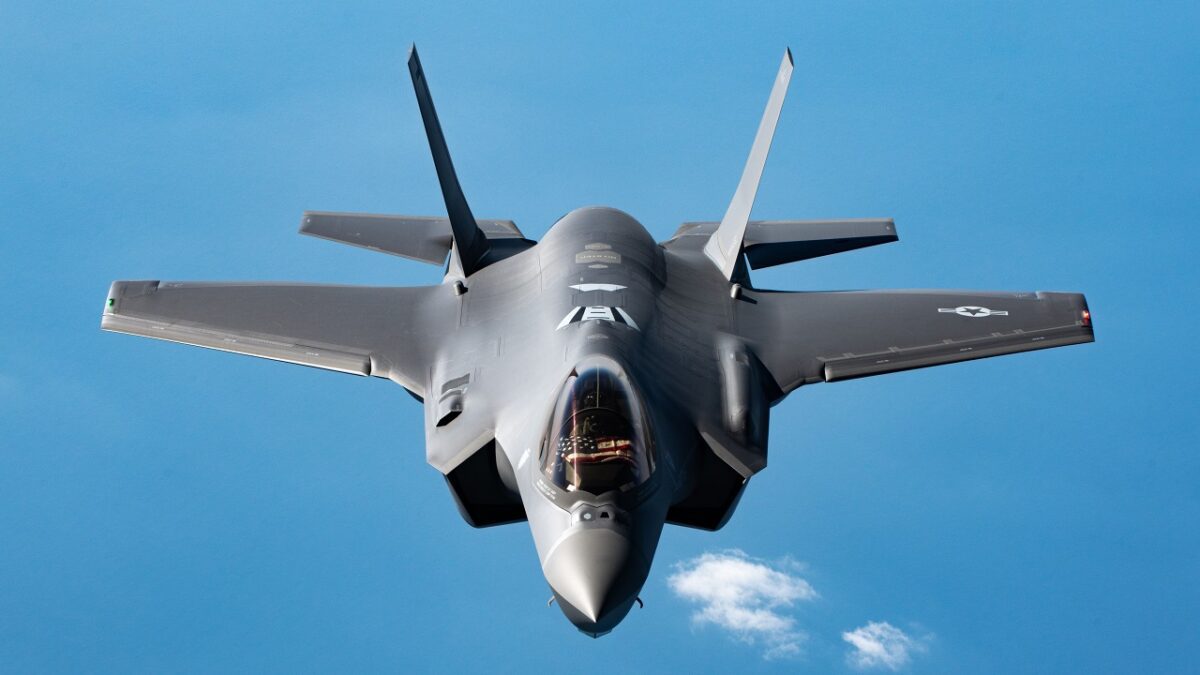
An F-35A Lightning II from the 354th Fighter Wing, Eielson Air Force Base, Alaska, flies behind a KC-135 Stratotanker assigned to the 117th Air Refueling Squadron, Forbes Field Air National Guard Base, Kansas, over the Indo-Pacific, March 10, 2022. Aircrews routinely fly missions aimed at sharpening the necessary skills needed to respond to emerging situations at a moment’s notice. (U.S. Air Force photo by Airman 1st Class Yosselin Perla)
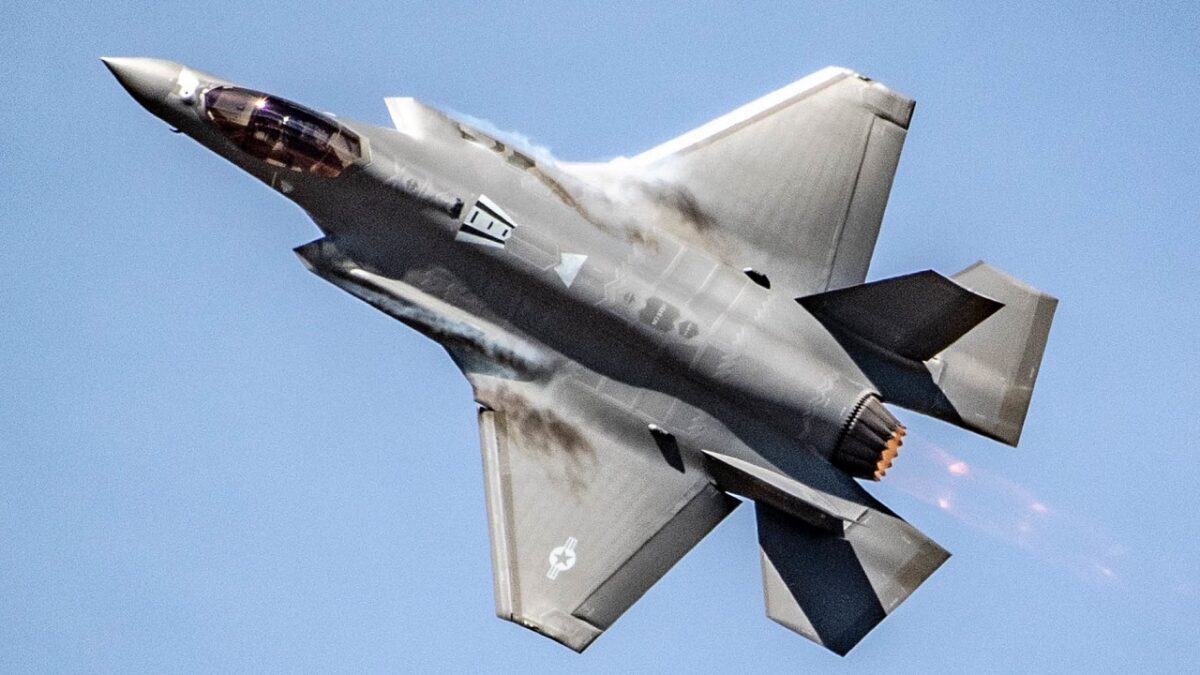
U.S. Air Force Maj. Kristin Wolfe performs a demonstration in the F-35A Lightning II during at the Reno Air Races in Reno, Nevada, September 19, 2021. The F-35 Lightning II Demonstration Team is based out of Hill Air Force Base, Utah. (U.S. Air Force photo by Tech. Sgt. Nicolas Myers)
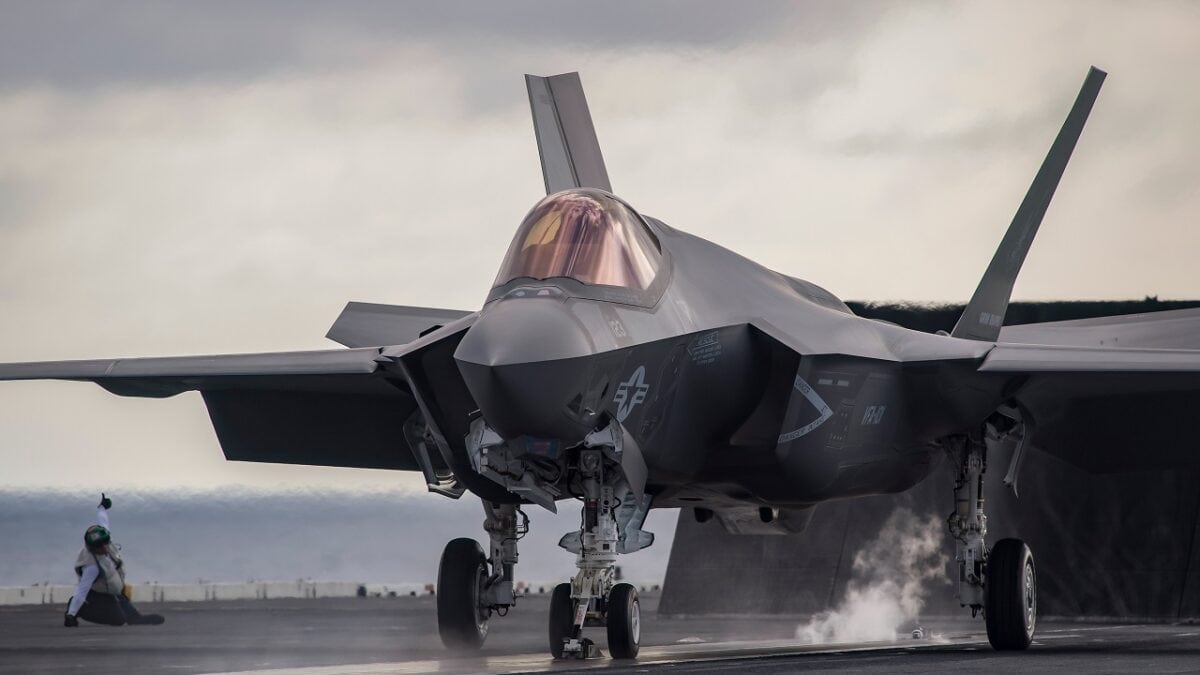
F-35 Joint Strike Fighter on carrier operations.
The F-35 can carry JDAMs, the joint stand-off weapon, Paveway IV guided bombs, and various air-to-air, air-to-ground missiles, and even Storm Shadow cruise missiles.
The F-22 Raptor
The F-22 has been profiled in 1945 here, but allow me to take a deeper dive into the weapons it has. The F-22 can carry two 1,000-pound GBU-32 Joint Direct Attack Munitions (JDAMs) internally. It also boasts two Sidewinders, six medium-range air-to-air missiles (AMRAAMs), and a 20mm Gatling gun. Six launchers mounted in the main weapon bays carry and launch the AMRAAMs.
The F-22 can change weapons distribution depending on whether it is in air-to-ground mode or air-to-air mode. This is all carried inside the airplane in internal bays for better stealth radar evasion.
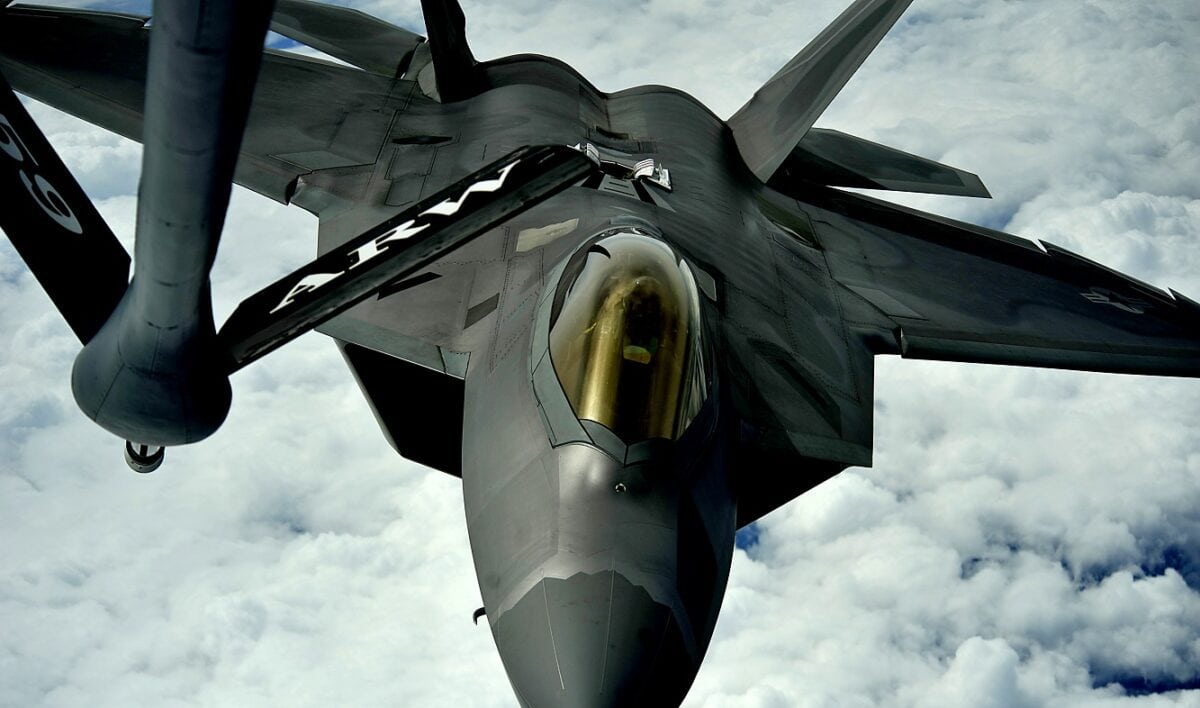
A 1st Fighter Wing’s F-22 Raptor from Joint Base Langley-Eustis, Va., pulls into position to accept fuel from a KC-135 Stratotanker with the 756th Air Refueling Squadron, Joint Base Andrews Naval Air Facility, Md., off the east coast on May 10, 2012. The first Raptor assigned to the Wing arrived Jan. 7, 2005. This aircraft was allocated as a trainer, and was docked in a hanger for maintenance personnel to familiarize themselves with its complex systems. The second Raptor, designated for flying operations, arrived Jan. 18, 2005. On Dec. 15, 2005, Air Combat Command commander, along with the 1 FW commander, announced the 27th Fighter Squadron as fully operational capable to fly, fight and win with the F-22.
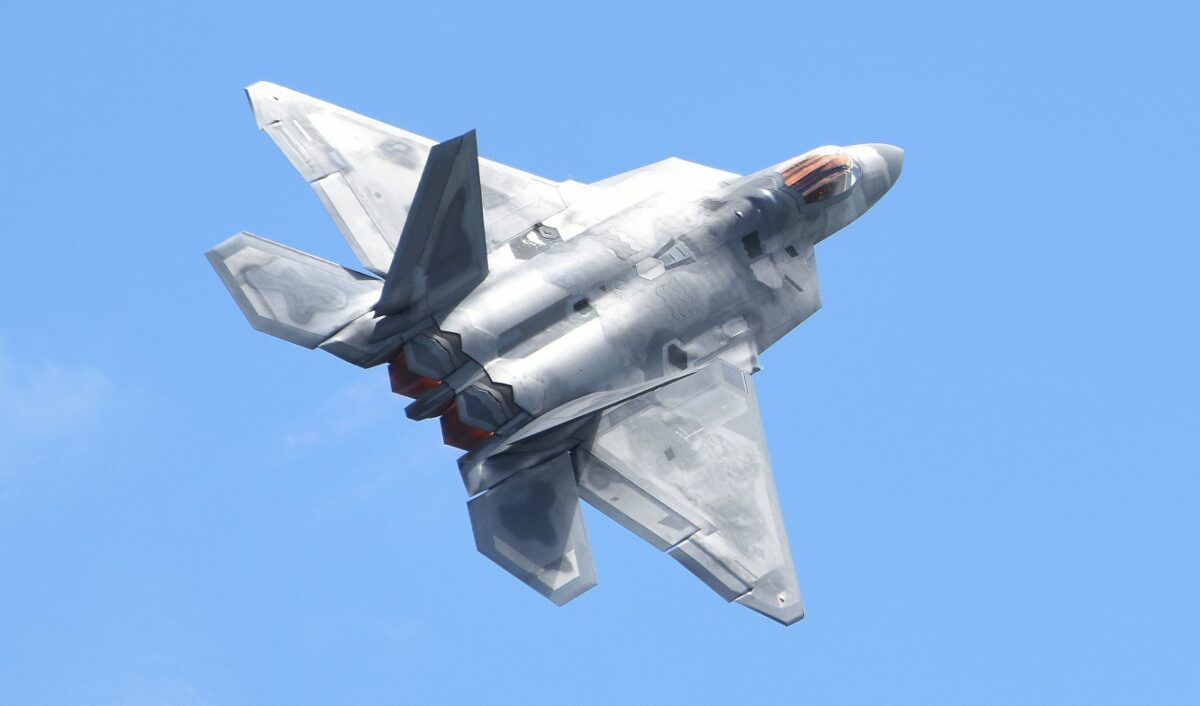
U.S. Air Force Maj. Paul Lopez, F-22 Demo Team commander, performers aerial maneuvers July 14, 2019, at the “Mission Over Malmstrom” open house event on Malmstrom Air Force Base, Mont. The team flies at airshows around the globe, performing maneuvers that demonstrate the capabilities of the fifth-generation fighter aircraft. The two-day event, featured performances by aerial demonstration teams, flyovers, and static displays. (U.S. Air Force photo by Airman 1st Class Jacob M. Thompson)
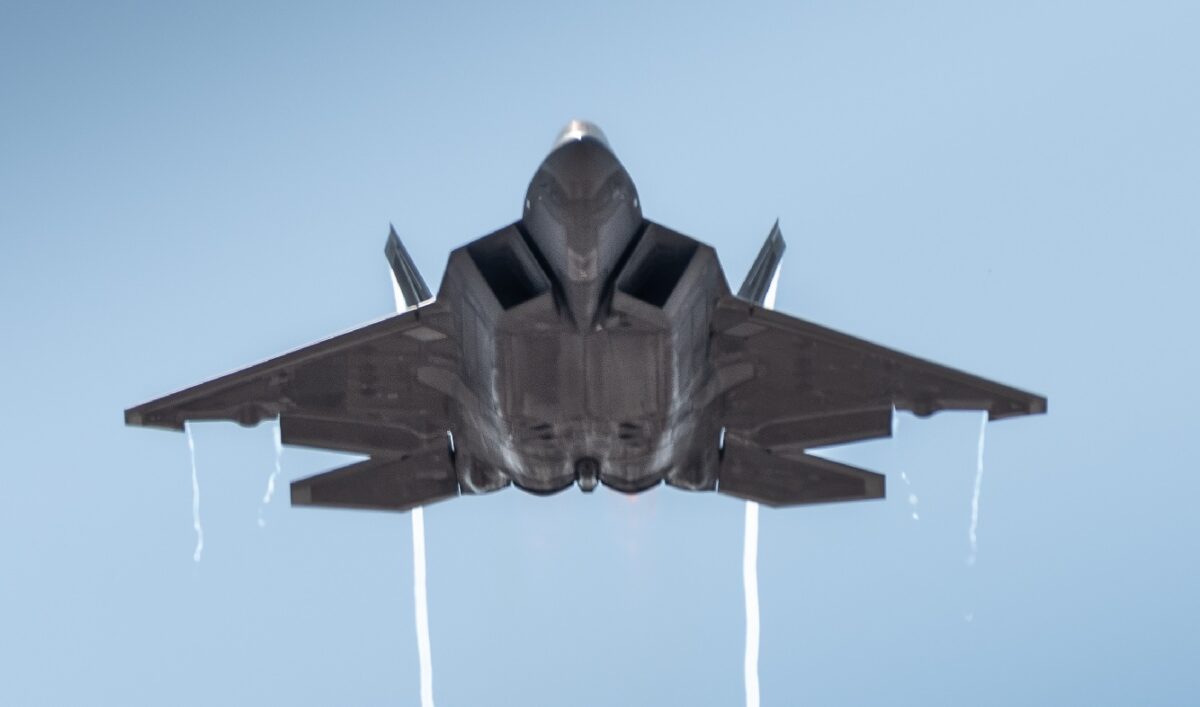
U.S. Air Force Maj. Paul Lopez, F-22 Demo Team commander, performs a high speed pass maneuver during the Fort Worth Alliance air show in Fort Worth, Texas, Oct. 19, 2019. Representing the U.S. Air Force and Air Combat Command, the F-22 Demo Team travels to 25 air shows a season to showcase the performance and capabilities of the world’s premier 5th-generation fighter. (U.S. Air Force photo by 2nd Lt. Sam Eckholm)
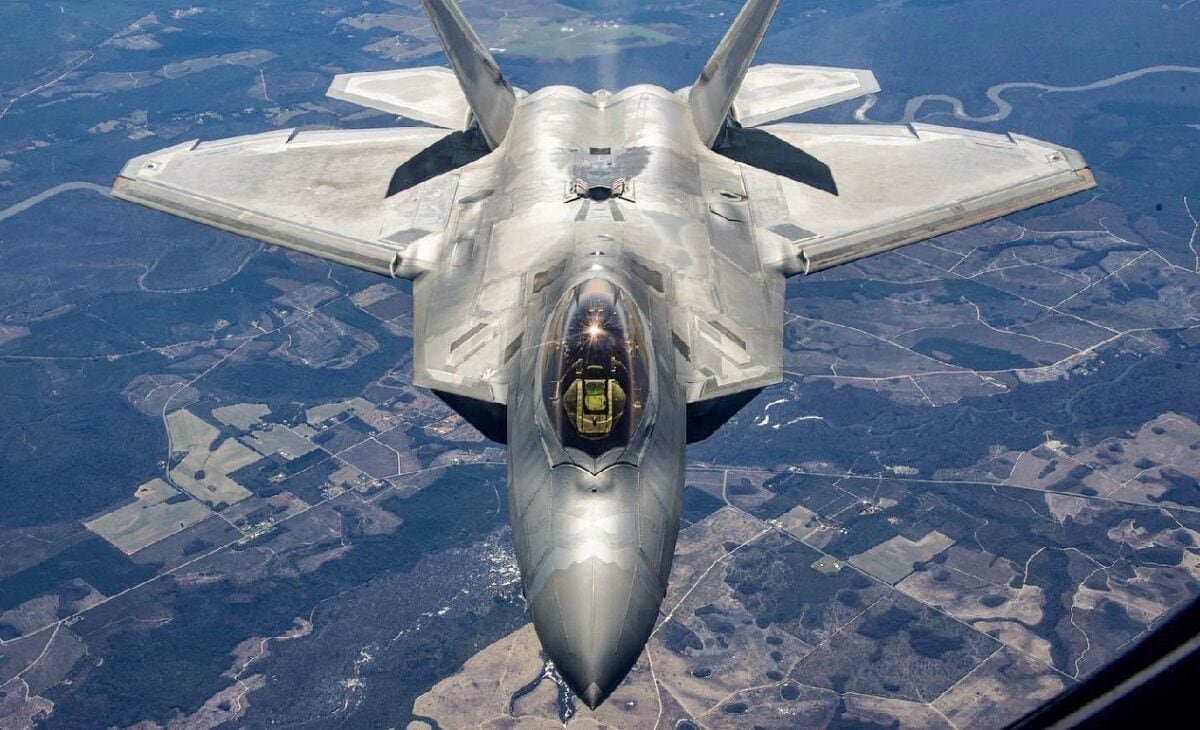
A U.S. Air Force KC-135 Stratotanker with the 434th Air Refueling Wing, Indiana, which had an aircrew with the 63rd Air Refueling Squadron, Florida, refuels a F-22 Raptor with the 325th Fighter Wing, Florida on February 23, 2021. The Stratotanker was on loan to MacDill Air Force Base. (U.S. Air Force photo by Senior Airman Tiffany A. Emery)
Missiles are launched out of the bay at 25 feet per second, with a force of 40Gs. The entire launch sequence lasts seconds.
Who’s the winner? I’ll take the B-52. No other airplane has been around longer. It has the biggest payload and has proved itself in almost every war the United States has fought in since its inception.
1945’s new Defense and National Security Editor, Brent M. Eastwood, PhD, is the author of Humans, Machines, and Data: Future Trends in Warfare. He is an Emerging Threats expert and former U.S. Army Infantry officer.

